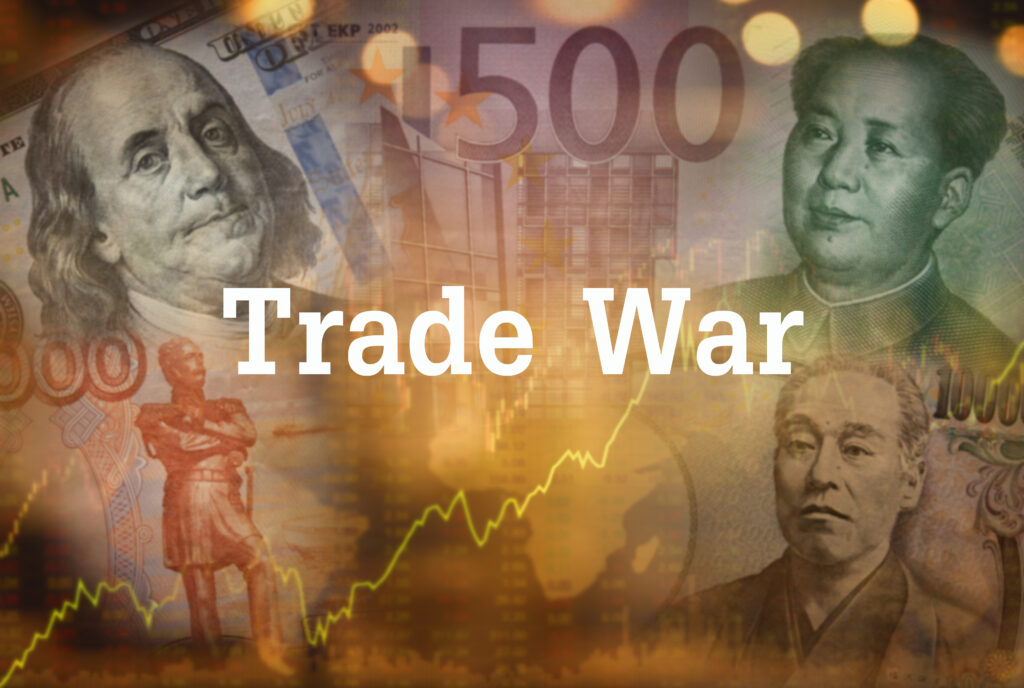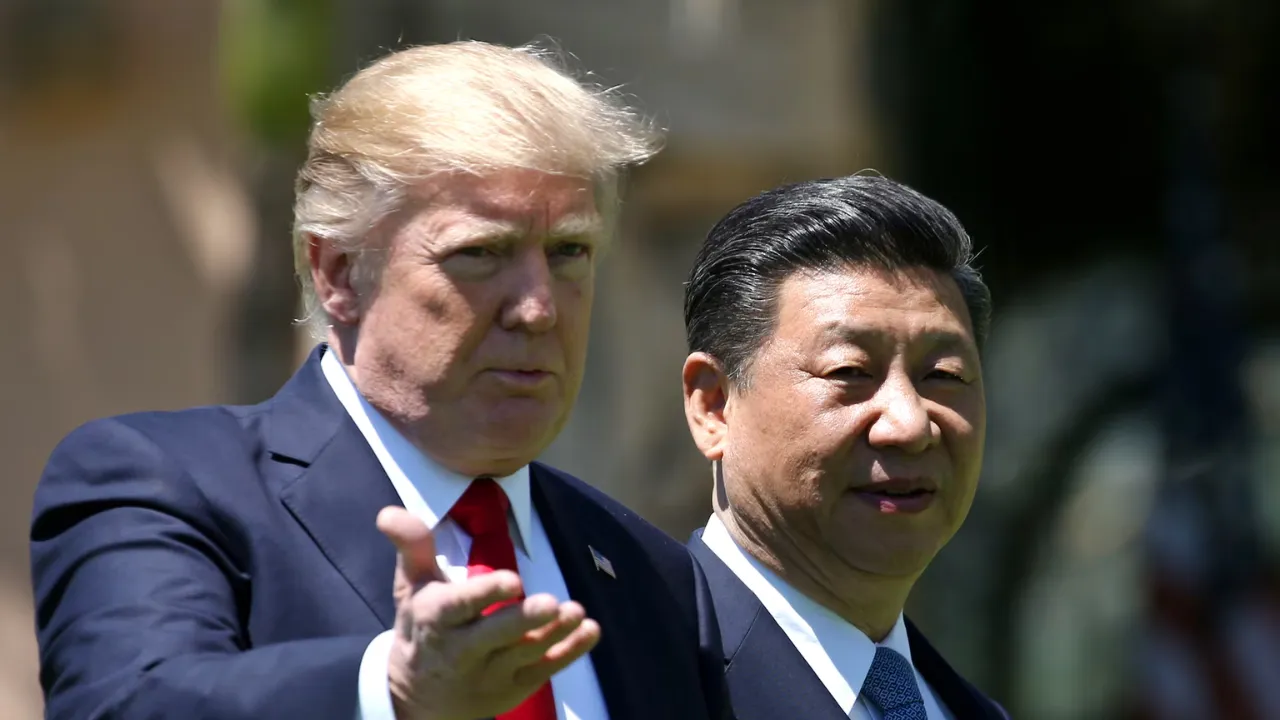
Key Points
- Research suggests China’s 84% retaliatory tariffs on US goods, effective April 10, 2025, escalate trade tensions, impacting global markets.
- It seems likely that the US-China trade war, with US tariffs at 104% on Chinese imports, affects India through higher export costs and potential market opportunities.
- The evidence leans toward India facing a 27% US tariff, potentially benefiting textile exports but risking inflation for consumers.
Introduction
China’s recent announcement of 84% retaliatory tariffs on US goods, set to begin on April 10, 2025, marks a significant escalation in global trade tensions. This move comes in response to the US increasing its tariffs on Chinese imports to 104%, intensifying a trade war that has already rattled markets. The European Union has also imposed 25% tariffs on US goods, adding to the complexity. This article from Vedwire explores how these developments affect global economies, with a special focus on India and its people.
These tariffs—104% by the US on Chinese goods, 84% by China on US goods, and 25% by the EU on US goods—have created a ripple effect, with global stock markets experiencing volatility and commodity prices, like oil, dropping due to demand uncertainty.
Impact on Global Markets
The high tariffs have led to significant disruptions:
- Stock markets have seen sharp declines, with investors fearing a global economic slowdown.
- Oil prices have fallen, reflecting uncertainty about future demand.
- Businesses are reevaluating supply chains, potentially relocating production to avoid the high costs, which could benefit countries like India.
Impact on India and Its People
India, a key player in global trade, faces both challenges and opportunities:
- Exports to the US: India is hit with a 27% reciprocal tariff, affecting sectors like pharmaceuticals (temporarily exempted), textiles, and IT services. While pharmaceuticals may see relief, textiles could gain from higher tariffs on competitors like China and Bangladesh.
- Competitive Advantage: Higher US tariffs on Chinese goods might open markets for Indian exporters, especially in textiles, potentially boosting jobs in this sector.
- Import Costs: Indian consumers may face higher prices for imported US goods, such as electronics and automobiles, leading to inflation.
- People’s Impact: Consumers could see increased costs for imported products, while workers in export industries might face job risks if demand drops. Investors are dealing with market volatility, adding uncertainty to financial planning.
This situation highlights India’s need to navigate these tensions through strategic trade negotiations to mitigate adverse effects and capitalize on emerging opportunities.
Survey Note: Detailed Analysis of Ongoing Trade Tensions and Impact on India
Overview of Current Trade Tensions
As of April 9, 2025, the global trade landscape is marked by escalating tensions, particularly between the US and China. China has announced retaliatory tariffs of up to 84% on US goods, effective April 10, 2025, in response to the US increasing its tariffs on Chinese imports to 104%. This escalation follows a series of actions, including the US imposing a 10% baseline tariff in February 2025 and additional reciprocal tariffs in March 2025. The European Union has also joined the fray, imposing 25% tariffs on US goods, creating a multi-front trade war that threatens global economic stability.
Detailed Recent History
To contextualize these developments, consider the following timeline, which captures the rapid escalation:
| Date | Event |
| Feb 2025 | US imposes 10% baseline tariff on all imports, citing unfair trade practices. |
| Mar 2025 | Trump announces additional reciprocal tariffs based on tariff differentials, aiming to address perceived trade imbalances. |
| Apr 2, 2025 | US increases tariffs on Chinese goods to 104%, a significant hike |
| Apr 4, 2025 | China responds with 34% retaliatory tariffs on US goods, .escalating the conflict. |
| Apr 9, 2025 | China further increases retaliatory tariffs to 84% on all US goods, signaling a hard-line stance. |
These tariffs—104% by the US on Chinese goods, 84% by China on US goods, and 25% by the EU on US goods—have created a ripple effect, with global stock markets experiencing volatility and commodity prices, like oil, dropping due to demand uncertainty.
This timeline underscores the tit-for-tat nature of the trade war, with each side pushing for leverage, impacting global trade flows.
Also Read : China’s Retaliatory Tariffs: 84% Levy on US Goods Sparks Global Chaos
Tariff Breakdown and Global Market Impact
The current tariff rates are staggering:
- US Tariffs on Chinese Goods: 104%, affecting a wide range of products from electronics to textiles.
- Chinese Tariffs on US Goods: 84%, targeting US exports like soybeans and machinery.
- EU Tariffs on US Goods: 25%, adding pressure on US exporters.
The global market impact is profound:
- Stock markets have experienced significant declines, with the S&P 500 dropping below 5,000 for the first time in nearly a year, losing $5.8 trillion in value since Trump’s tariff announcement.
- Commodity prices, particularly oil, have dipped, with Brent crude falling to $60.46 per barrel, reflecting market jitters.
- Businesses, especially in manufacturing, are facing disruptions, with companies like Delta Air Lines scrapping 2025 forecasts due to trade uncertainties, highlighting the broader economic ripple effects.
Detailed Impact on India
India, with significant trade ties to both the US and China, is navigating a complex landscape:
- Exports to the US: India faces a 27% reciprocal tariff, as announced by Trump, impacting key sectors. Pharmaceuticals, a $12.2 billion export to the US, have been temporarily exempted from tariffs, providing relief. However, textiles, accounting for $10 billion in exports to the US in 2023-24, could benefit from higher tariffs on competitors like China (104%) and Bangladesh (37. IT services, a $205.2 billion export sector, are not directly affected but may face indirect impacts if the US economy slows.
- Competitive Advantage: The higher tariffs on Chinese goods open opportunities for Indian exporters. For instance, textile manufacturers could expand in the US market, potentially creating jobs. This is an unexpected benefit, given India’s historical competition with China in global markets.
- Import Costs: Indian importers of US goods, such as automobiles and electronics, will face higher costs due to the 84% Chinese tariffs on US products, potentially leading to inflation.
Impact on Indian People
The ripple effects on Indian citizens are significant:
- Consumers: Higher prices for imported goods, especially electronics and automobiles, could strain household budgets, particularly in urban areas where these products are prevalent.
- Workers: Potential job losses or wage stagnation in export-oriented industries like textiles if demand fluctuates, affecting millions employed in labor-intensive sectors.
- Investors: Volatility in stock markets, with Indian equity markets reacting to global sell-offs, adds uncertainty for investors.
Conclusion and Forward-Looking Statements
The ongoing trade tensions, particularly China’s 84% retaliatory tariffs, signal a new, chaotic chapter in global trade dynamics. For India, the challenge lies in balancing higher export costs with emerging opportunities, especially in textiles. Strategic trade negotiations, such as the proposed India-US bilateral trade agreement, could mitigate impacts, as suggested by Vedwire. As global markets brace for further escalations, India’s ability to adapt will be crucial for its economic resilience.
- Trump takes U-turn on running for presidency in 2028, backs JD Vance, Rubio: Here’s what he said
- RBI keeps repo rate unchanged at 5.5% amid Trump tariff threat
- Shocking Claim: Zelensky claims Chinese Fighters in Russia’s Ukraine War
- Triumphant: Royal Anniversary Vatican Visit Amid Italian State Trip
- Trump Slaps 125% Tariffs on China, Offers 90-Day Tariff Pause for Negotiating Nations




Leave a Reply